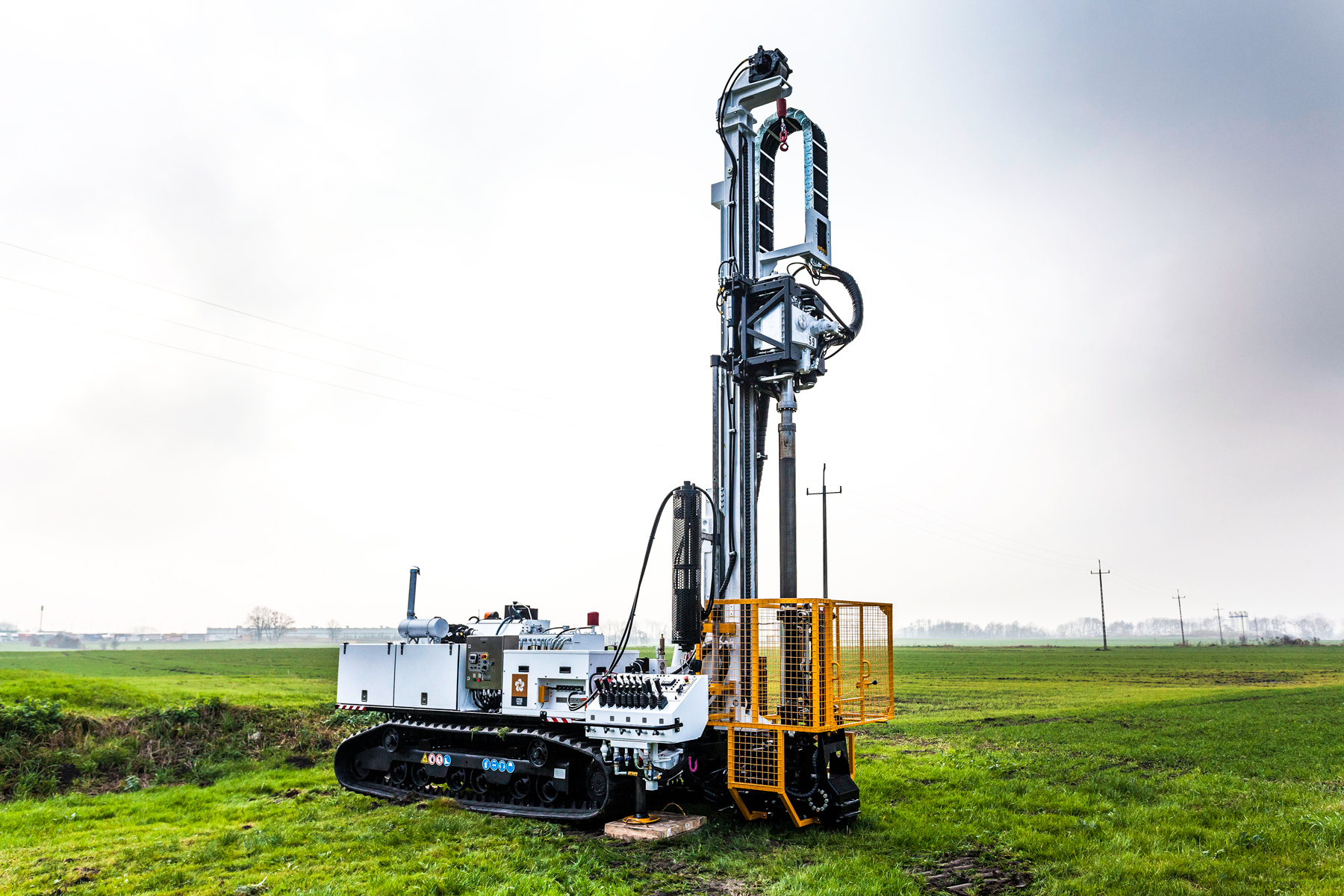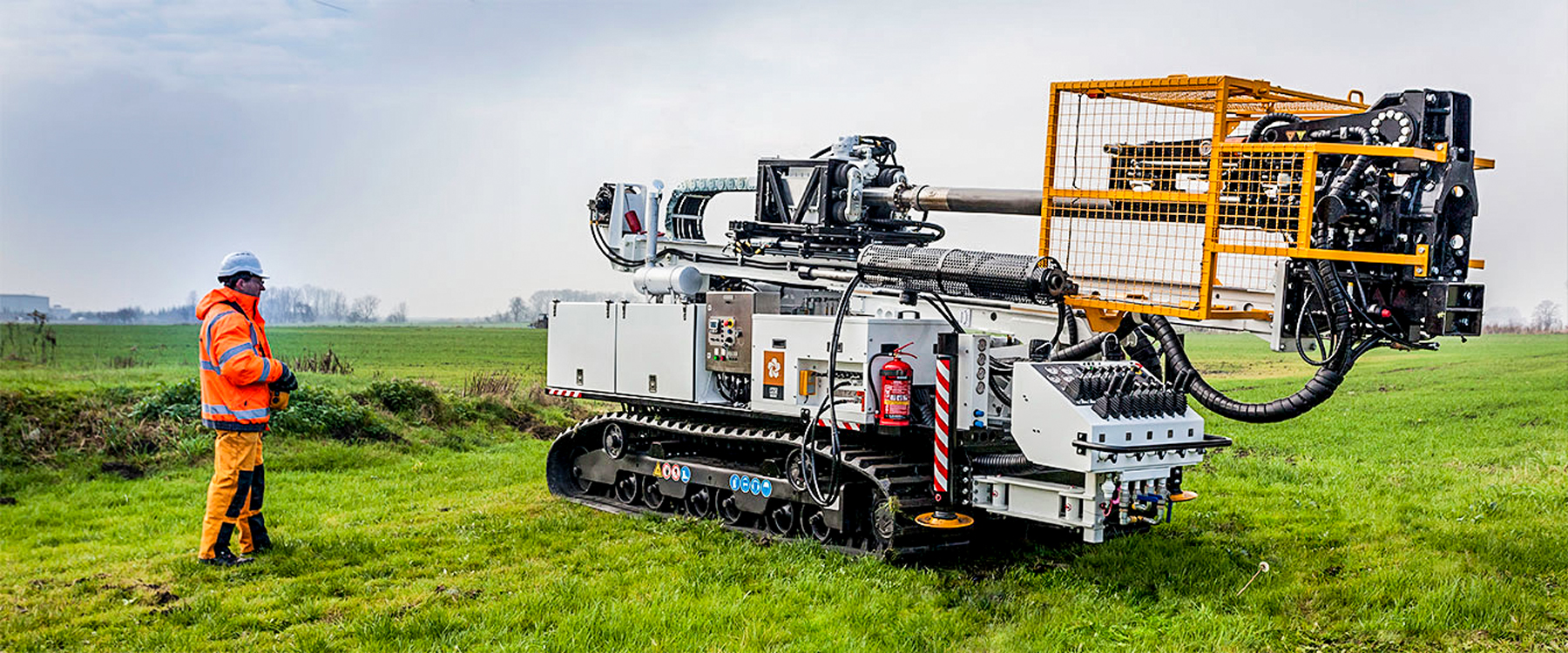NON-MINING
juillet 18, 2017
Can you feel it? Sonic drilling technology is making moves
Sonic drilling becoming method of choice for a variety of challenges.
This article originally appeared in National Driller.
From tailing piles at remote mine sites to a contaminated site in a congested urban district: sonic drilling is becoming the method of choice for a variety of challenges.
Sonic drilling uses a dual-line threaded drill pipe and casing, with the inner line being advanced with a core barrel attached to it and the outer line creating hole stability. Because drilling fluid is not used during sampling, this “dry” sampling technique results in intact core samples that are unaltered by drilling fluids.
Following the advancement of the inner drill pipe and core barrel, the outer drill casing is advanced to within one foot of the leading edge of the core barrel.
The outer casing serves the same purpose as for conventional dual-line drilling systems by holding the borehole open for well installation, geophysical logging or other down-hole activities. Depending on drilling formations, drilling fluid may be introduced during the advancement of the outer drill casing.

Sonic drilling also greatly reduces the risk of project failure due to unknown or difficult subsurface conditions. It also offers the flexibility of advancing a temporary outer casing as the borehole is drilled, meaning more can be accomplished with a single borehole.
Boart Longyear’s drillers are the industry’s most experienced in sonic drilling, which dates back to the 1990s.

Although adoption of the technology has been slow, sonic drilling is now being seen as the solution for a variety of needs. In Canadian oil fields, for example, where soft rock formations predominate, companies are increasingly coming to recognize sonic’s advantages over both conventional rotary drills and auger drills for many applications.
After the 2014 failure of the Mount Polley tailings dam in British Columbia, the provincial government mandated the installation of monitoring wells and piezometers on tailing piles throughout the province. The difficult accessibility of many sites and the potential instability of the pilings made Boart Longyear’s new LS250 MiniSonic rig an obvious choice for the job.
The reliable, compact sonic rig is proving to be the ideal solution for a wide range of applications, including geotechnical, environmental, water and mining. Its compact size allows it to be easily transported to hard-to-reach sites like the tailing piles or to work in tight spaces.
Such was the case in downtown Calgary, Alberta, where a major sports and entertainment complex is proposed for an underdeveloped riverfront site that now includes auto dealerships and a bus station. Although a creosote plant there closed decades ago, creosote extends several meters below the surface across much of the proposed development area.
A recent environmental investigation required drilling sampling holes at multiple points across the property. Sonic technology and the rig’s maneuverability meant mission accomplished with practically perfect core samples.
Drilling Down

Sonic drilling employs the use of high-frequency, resonant energy to advance a core barrel or casing into subsurface formations. During drilling, the resonant energy is transferred down the drill string to the bit face at various sonic frequencies. Simultaneously rotating the drill string evenly distributes the energy and impact at the bit face.
The resonant energy is generated inside the sonic head by four counter-rotating weights. A patented pneumatic isolation system prevents the resonant energy from transmitting to the drill rig and preferentially directs the energy down the drill string.
The driller controls the resonant energy generated by the sonic oscillator to match the formation being encountered to achieve maximum drilling productivity. When the resonant sonic energy coincides with the natural frequency of the drill string, resonance occurs.
This results in the maximum amount of energy being delivered to the face. At the same time, friction of the soil immediately adjacent to the entire drill string is substantially minimized, resulting in very fast penetration rates.
Sonic Advantages
Sonic offers several distinct advantages over conventional technologies. Among them is the superior information provided by the continuous, relatively undisturbed core sample of unparalleled quality and accuracy through any type of soil — clay, till, loose or heaving sand, gravel, boulders or cobbles. When using the iso-flow groundwater profiling system, hydrogeological and geochemical data can be easily obtained.
Sonic drilling also reduces drill spoils and waste by up to 80 percent relative to conventional drilling methods. Unlike drilling with an auger, virtually no cleanup is necessary.
Superior well construction is another advantage. Sonic drilling causes minimal disturbance to the surrounding borehole wall, resulting in more efficient well development and performance. Then there’s the speed. Sonic drilling is up to two to three times faster than conventional overburden drilling methods.
Safety features of the LS250 MiniSonic rig include an interlocked rotation barrier, reduced noise levels, a dump mast and wiggle tail, and a rod presenter. The interlocked rotation barrier automatically slows head rotation when the barrier is open. The rig also provides lower noise levels when equipped with the Tier 4i engine package.
The articulated mast and wiggle tail enable the mast to shift from left to right and front to back to position the mast precisely over the hole, eliminating time-consuming rig movements. The dump mast allows the crew to work from the ground, enhancing safety by avoiding stairs and safety rails often required when working from a platform.
The innovative rod presenter allows the rod and casing to be loaded horizontally, with an actuator that then presents the rod and casing vertically to the head. The head rotates 28 degrees to the side for sample extraction, while the head slide shift allows for unobstructed winch use down the hole.
What's Next?
The LS250 MiniSonic rig is capable of drilling to depths of up to 250 feet (78 meters) when used with a 4.75-inch (121 millimeter) casing. Its “big brother,” the LS 600 Sonic rig, can go even deeper — up to 600 feet (182 meters), as its name implies. The Boart Longyear lineup also includes high-quality sonic tooling, from bits and casing shoes to sonic rod, core barrel, casing and accessories.
As awareness of sonic drilling’s advantages continues to grow and as more and more geotechnical engineers specify sonic, the market will likely demand continued innovation and sonic drills capable of even deeper, larger-diameter samples. And Boart Longyear, already at the leading edge of sonic drilling, will continue to lead the way.
To learn more about Boart Longyear’s LS250 MiniSonic rig, visit www.BoartLongyear.com/MiniSonic.
DISCUSSION
-
I worked with you at boartlongyer zambia . i was in accounts . I would like to be in touch with for your help.




